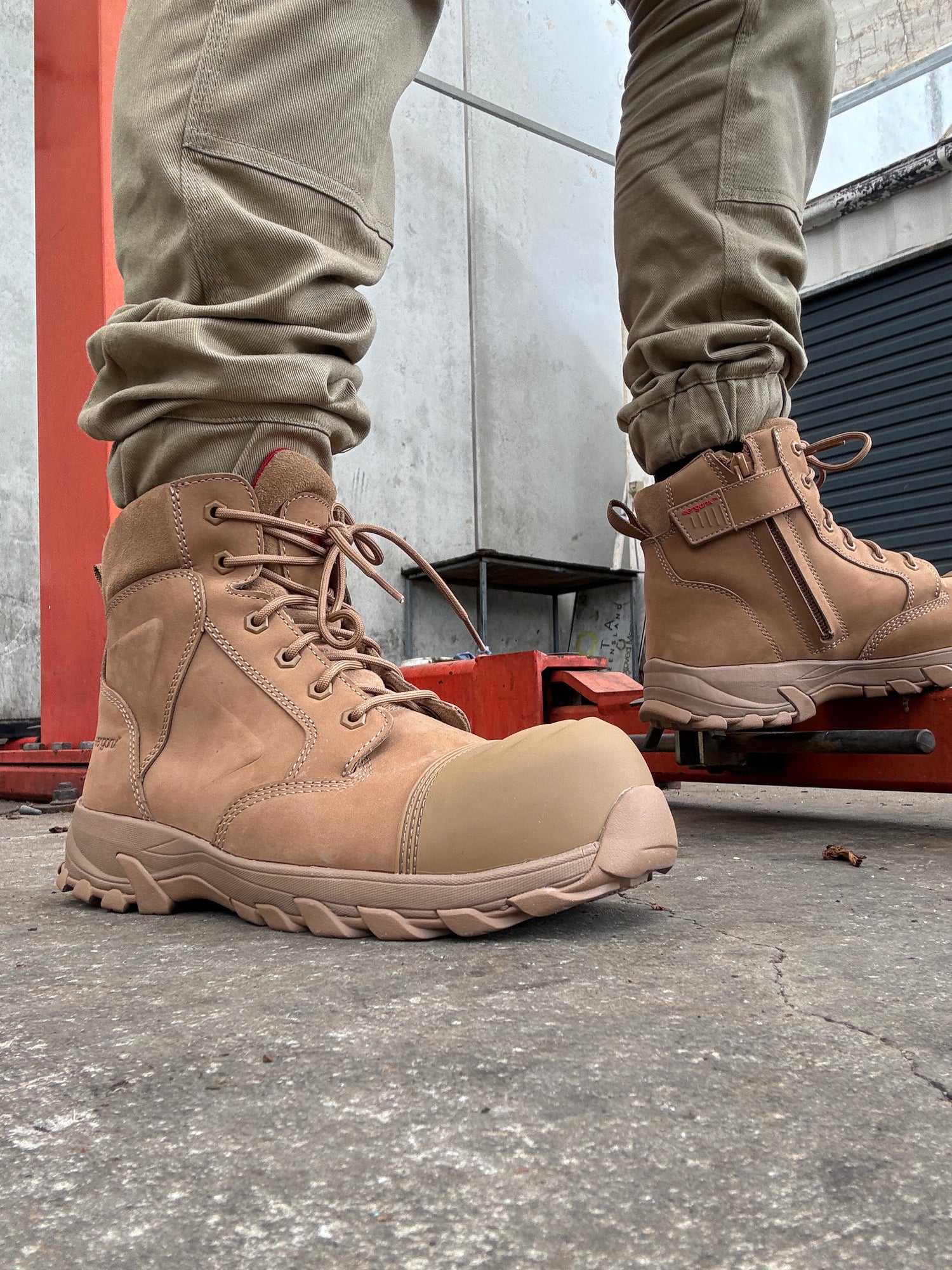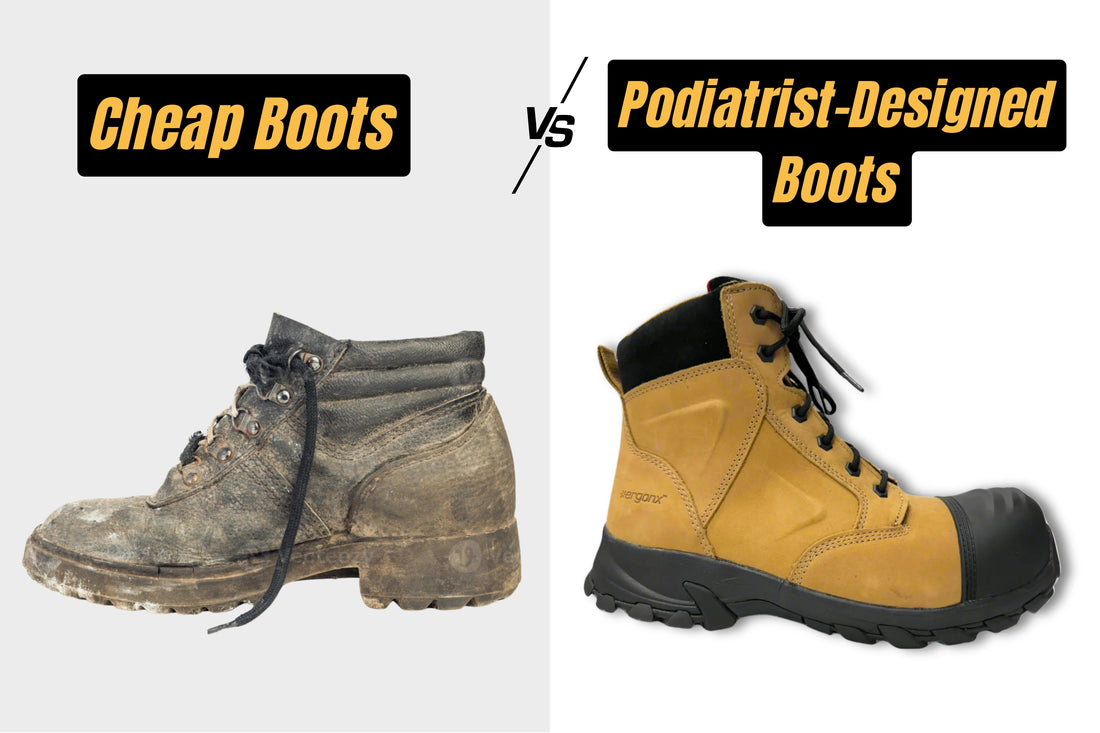When it comes to protecting your feet, preventing pain, and avoiding long-term foot problems, it’s crucial to ask:
What’s the difference between cheap and podiatrist-designed boots?
You might assume all boots serve the same purpose — but there’s a world of difference in the materials, construction, and health outcomes. Let’s explore why paying more for a podiatrist-designed option can save your feet, knees, and even your money in the long run.
Cheap Shoes vs. Podiatrist-Designed Footwear: The Material Matters
Most cheap shoes use lower-grade materials like basic PU foam and rigid soles. While this might save money up front, it usually means:
- Poor shock absorption
- Higher risk of foot pain
- Minimal support
- Faster breakdown under daily wear
On the other hand, a quality shoe built by a podiatrist uses advanced EVA midsoles, lightweight composite toes, and puncture-resistant soles — all designed to promote proper foot alignment and reduce strain on the heel, ankle, and lower leg.
Built-In Support That Makes a Real Difference

Podiatrist-designed footwear includes features specifically engineered for long-term foot health:
- Custom orthotics or removable insoles
- Built-in arch support
- Contoured footbeds for even pressure distribution
- Strategic midsole stiffness to guide correct walking mechanics
These boots don’t just feel better — they actually reduce foot conditions like plantar fasciitis, shin splints, and bunions, which often arise from poor arch support or improper foot type matching.
Orthotics, Comfort, and Fit: Why Podiatrist-Designed Wins

Good orthotics play a critical role in relieving foot pain. A podiatrist will assess your foot and prescribe a custom fit that supports your arch, heel, and toes. Many podiatrist-grade shoes come with built-in orthotics, or allow easy integration of shoe inserts and custom orthotics.
Cheaper brands often ignore the foot's complex needs, leading to:
- Improper fit across the foot shape
- Increased pain from excess pressure
- More frequent visits to your doctor or even surgery
Sandals, Styles, and Seasonal Comfort
Shoes aren’t just about protection — they’re about matching your lifestyle. From safety boots to sandals and summer styles, podiatrist-designed options ensure that every pair provides real support, no matter the season.
Even casual shoes or sandals can include:
- Proper arch support
- Anti-roll heel counters
- Custom orthotics compatibility
- Foam cushioning that adapts to your gait
This means you don’t have to choose between support and flexibility — you can have both.
Does Higher Cost Equal Higher Quality?
Not always. But when it comes to your feet, paying for quality often means:
- Longer lifespan per pair
- Better treatment for chronic foot conditions
- Fewer replacements over time
- Less pain, more daily comfort
The cost of cutting corners is usually hidden — in rising discomfort, reduced effectiveness of off-the-shelf shoe inserts, and increasing doctor or podiatrist visits.
Pharmacy Insoles vs. Podiatrist Custom Orthotics
You might grab a pharmacy insole hoping for relief, but generic options rarely offer:
- A true custom fit
- Lasting foot support
- Compatibility with your foot type
While pharmacy shoe inserts can help temporarily, they don’t address underlying foot conditions. Podiatrist-made custom orthotics are tailored, proven, and much more effective over time.
Conclusion: Stop Compromising Comfort for Cost
There’s no need to keep compromising comfort just to save money. The difference between cheap and podiatrist-designed boots lies in every step — from the moment you slip them on to how your feet, knees, and back feel at the end of the day.
Whether you're buying shoes, boots, or sandals, choose a brand built on clinical insight, real-world use, and the needs of actual patients.
Your foot health deserves better than cheap shoes.


